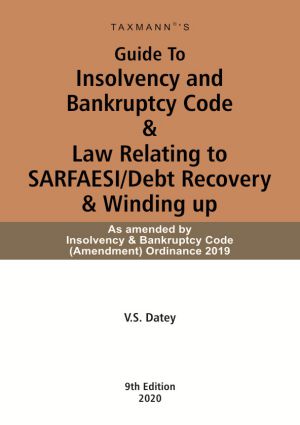Winding Up of A Company
- Blog|Insolvency and Bankruptcy Code|
- 4 Min Read
- By Taxmann
- |
- Last Updated on 14 July, 2021
1. Meaning of winding Up:
2. Meaning of Dissolution of a Company:
A company is said to be dissolved when it ceases to exist as a corporate entity. On dissolution, the company’s name shall be struck off by the Registrar from the Register of Companies and he shall also get this fact published in the Official Gazette. The dissolution thus puts an end to the existence of the company.
3. Difference between Dissolution & Winding Up of a company.
|
S. No. |
Winding Up |
Dissolution |
|
1. |
Winding up is one of the methods by which the dissolution of a company is brought about. |
Dissolution is the end result of winding up. |
|
2. |
The legal entity of the company continues at the commencement of the winding-up. |
Dissolution brings about an end to the legal entity of the company |
|
3. |
A company may be allowed to continue its business as far it is necessary for the beneficial winding up of the company |
The company ceases to exist on its dissolution. |
4. Modes of Winding Up of a Company:
A company may be wound up in any of the following two ways:
4.1. Compulsory winding up of a company:
Winding up a company by an order of the Tribunal is known as compulsory winding up.
Who may file a Petition to the Tribunal?
A petition for compulsory winding up of a company may be filed in the Tribunal by any of the following persons. (Sec. 272)
4.2. Liquidation under Insolvency and Bankruptcy Code 2016:
The Insolvency and Bankruptcy Code, 2016 relates to re-organization and insolvency resolution of companies, partnership firms, and individuals in a time-bound manner. The Insolvency and Bankruptcy Code, 2016 applies to matters relating to the insolvency and liquidation of a company where the minimum amount of the default is Rs. 1 lakh (may be increased up to Rs.1 cr by the Government, by notification).
1. Insolvency Resolution Process –
It is the stage during which financial creditors assess whether the debtor’s business is viable to continue and the options for its re-organization and re-structuring are suggested; and
2. Liquidation –
5. Modes of Dissolution:
Dissolution of a company may be brought about in any of the following ways: 1. Through transfer of a company’s undertaking to another under a scheme of reconstruction or amalgamation. In such a case, the transfer or company will be dissolved by an order of the Tribunal without being wound up. 2. Through the winding up of the company, wherein assets of the company are realized and applied towards the payment of its liabilities. The surplus, if any is distributed to the members of the company, in accordance with their rights.
Disclaimer: The content/information published on the website is only for general information of the user and shall not be construed as legal advice. While the Taxmann has exercised reasonable efforts to ensure the veracity of information/content published, Taxmann shall be under no liability in any manner whatsoever for incorrect information, if any.

Taxmann Publications has a dedicated in-house Research & Editorial Team. This team consists of a team of Chartered Accountants, Company Secretaries, and Lawyers. This team works under the guidance and supervision of editor-in-chief Mr Rakesh Bhargava.
The Research and Editorial Team is responsible for developing reliable and accurate content for the readers. The team follows the six-sigma approach to achieve the benchmark of zero error in its publications and research platforms. The team ensures that the following publication guidelines are thoroughly followed while developing the content:
- The statutory material is obtained only from the authorized and reliable sources
- All the latest developments in the judicial and legislative fields are covered
- Prepare the analytical write-ups on current, controversial, and important issues to help the readers to understand the concept and its implications
- Every content published by Taxmann is complete, accurate and lucid
- All evidence-based statements are supported with proper reference to Section, Circular No., Notification No. or citations
- The golden rules of grammar, style and consistency are thoroughly followed
- Font and size that’s easy to read and remain consistent across all imprint and digital publications are applied








 CA | CS | CMA
CA | CS | CMA


